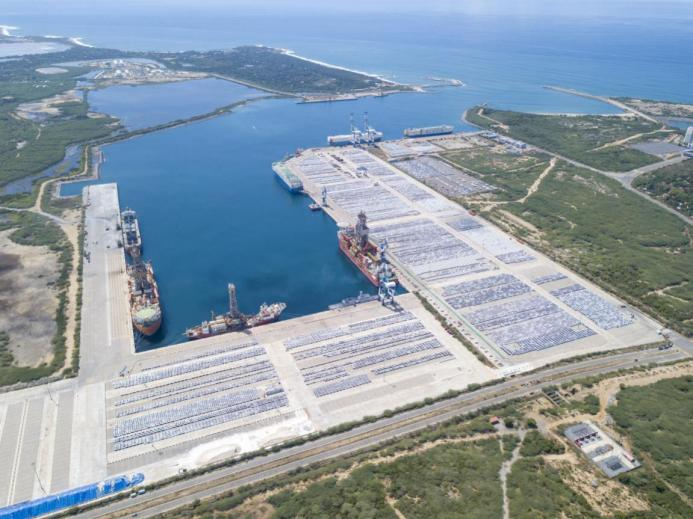Hambantota International Port Group signs strategic cooperation document with Board of Investment of Sri Lanka
Hambantota International Port Group, jointly run by Chinese and Sri Lankan companies, signed a memorandum of strategic cooperation with Board of Investment of Sri Lanka recently in the presidential palace of Sri Lanka, which announced the strategic cooperation to be carried out in the future.
Namal Rajapaksa, Cabinet Minister of Youth Affairs and Sports and Minister of Development Coordination & Monitoring of Sri Lanka, said that Hambantota has become one of the busiest ports in Sri Lanka with the operation of Hambantota International Port Group. As a free port in Sri Lanka, Hambantota boasts the advantages of supporting policies, favorable taxes and port logistics services. It is an important platform for Sri Lanka's industrial upgrading and development. The Sri Lankan government will continue to support the development of the port.
Mohottala, Chairman of the Board of Investment of Sri Lanka, highly acknowledged the achievements of Hambantota International Port Group in attracting investment to the industrial park and promoting Sri Lanka's industrial development. He said that the signing of the memorandum of strategic cooperation means the cooperation at a higher level between the two parties has taken shape.
Liu Enhuai, Chief Representative of China Merchants Group in Sri Lanka and CEO of Hambantota International Port Group, said that the group is committed to providing high-quality and efficient services for ships and vessels in the east-west waterways, and turning Hambantota into an industrial park to serve the world. The two sides are expected to realize "sharing in the four fields" of port resources, terminal facilities, park resources and overall planning, and work together to deepen cooperation and achieve mutual benefit and win-win results under the new cooperation framework.

An aerial view of Hambantota port area (Photo provided by China Merchants Group)
Hambantota Port is a key project based on the cooperation between China and Sri Lanka in the Belt and Road Initiative. It is one of the two comprehensive ports and free ports to be developed in Sri Lanka's national plan, the other being Port of Colombo. It places focus on the development of the container and oil gas industries, and also intends to develop the automobile ro-ro shipping and bulk cargo business. It will be built into a platform highlighting the five fields of port services, maritime services, integrated logistics, port-centered industry and energy center. The project is located in the capital of Hambantota District, Southern Province of Sri Lanka, about 10 nautical miles from the world's busiest international ocean shipping route. With great geographical advantages and known as the "Crossroad of the East" and "heart of the Indian Ocean", it serves as a stop for more than 50% of the world's container freight, one-third of bulk shipping, and two-thirds of oil transportation to the Indian Ocean.
On December 9, 2017, China Merchants Group officially took over the operation of Hambantota Port, the second project it undertakes in Sri Lanka. The group has made full use of the geographical advantages of Hambantota Port to implement comprehensive development. In terms of ports, the group has promoted the commercial integration of the two ports along with CICT, and transferred all the automobile ro-ro shipping business of the Port of Colombo to Hambantota Port. It has also undertaken part of the ro-ro transfer business from Singapore, expanded the bulk cargo business, and restarted the oil gas business. On February 24, 2021, Hambantota Port saw the first single-vessel refueling business. It has worked with Sinopec, and will become an important energy supply station on the Asia-Europe route. In terms of industry, the group has vigorously promoted the development of parks in the port, worked together with industry associations, attracted production and processing enterprises with "both suppliers and buyers outside", and introduced and developed industries such as new energy, logistics, automobiles and accessories, home appliances, new materials, textiles and clothing, and furniture manufacturing. Sri Lanka's largest private foreign investment project, that of a tire factory with an investment of 500 million U.S. dollars, was introduced in 2020. It will create a large number of jobs here and promote the local rubber planting industry to directly benefit Sri Lanka. Projects such as electronic industrial park in the park, yacht assembly plant, and oil testing have been introduced to boost the development of local industries and throughput efficiency of the port.


